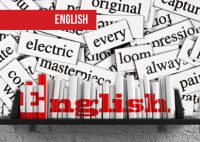Sentence Rearrangement for SBI PO : Set 21

Sentence Rearrangement for SBI PO : Set 21
Directions: Rearrange the given five sentences I, II, III, IV, V and VI in the paragraph sequence so as to form a meaningful paragraph and then answer the questions given below them.
| I. Lastly, my thanks to Ramesh, for wanting to do this last thesis together. | ||||
| II. And, as always, my appreciation to David, who often believes in me more than I do myself. | ||||
| III. I would like to acknowledge the enormous help given to me in creating this book. | ||||
| IV. For their patience, I wish to thank Joseph and John and a multitude of my friends. | ||||
| V. Also special thanks to Thomas, my editor, for handling this project with the right touch. | ||||
| VI. Have you ever had a friend like Ramesh? | ||||
| 1. Which of the following will be the FIRST sentence after rearrangement? | ||||
| (a) I | (b) II | (c) III | (d) IV | (e) V |
| 2. Which of the following will be the SECOND sentence after rearrangement? | ||||
| (a) I | (b) II | (c) III | (d) IV | (e) V |
| 3. Which of the following will be the THIRD sentence after rearrangement? | ||||
| (a) I | (b) II | (c) III | (d) IV | (e) V |
| 4. Which of the following will be the FOURTH sentence after rearrangement? | ||||
| (a) II | (b) III | (c) IV | (d) V | (e) VI |
| 5. Which of the following will be the SIXTH (LAST) sentence after rearrangement? | ||||
| (a) I | (b) II | (c) III | (d) IV | (e) VI |
Answer Key:
1. (c) 2. (d) 3. (e) 4. (a) 5. (e)
Directions: Rearrange the given five sentences A, B, C, D, E and F in the paragraph sequence so as to form a meaningful paragraph and then answer the questions given below them.
| A. A classroom discussion can be initiated n order to answer this very question. | ||||
| B. An electric current could not be made to traverse distilled water. | ||||
| C. Yet when salt and distilled water were mixed, then the solution became a liquid through which electricity could pass with ease. | ||||
| D. Neither would solid salt offer free passage to electricity. | ||||
| E. How could one explain this strange behavour of solution? | ||||
| F. And, as the current passed through this solution, deep-seated decomposition took place. | ||||
| 1. Which of the following will be the FIRST sentence? | ||||
| (a) A | (b) D | (c) B | (d) C | (d) F |
| 2. Which of the following will be the THIRD sentence? | ||||
| (a) C | (b) D | (c) F | (d) A | (d) E |
| 3. Which of the following will be the FOURTH sentence? | ||||
| (a) A | (b) B | (c) F | (d) E | (d) D |
| 4. Which of the following will be the FIFTH sentence? | ||||
| (a) A | (b) C | (c) B | (d) E | (d) F |
| 5. Which of the following will be the SIXTH (last) sentence? | ||||
| (a) C | (b) A | (c) B | (d) E | (d) F |
Answer Key:
1.(c) 2. (a) 3. (c) 4. (d) 5. (b)


